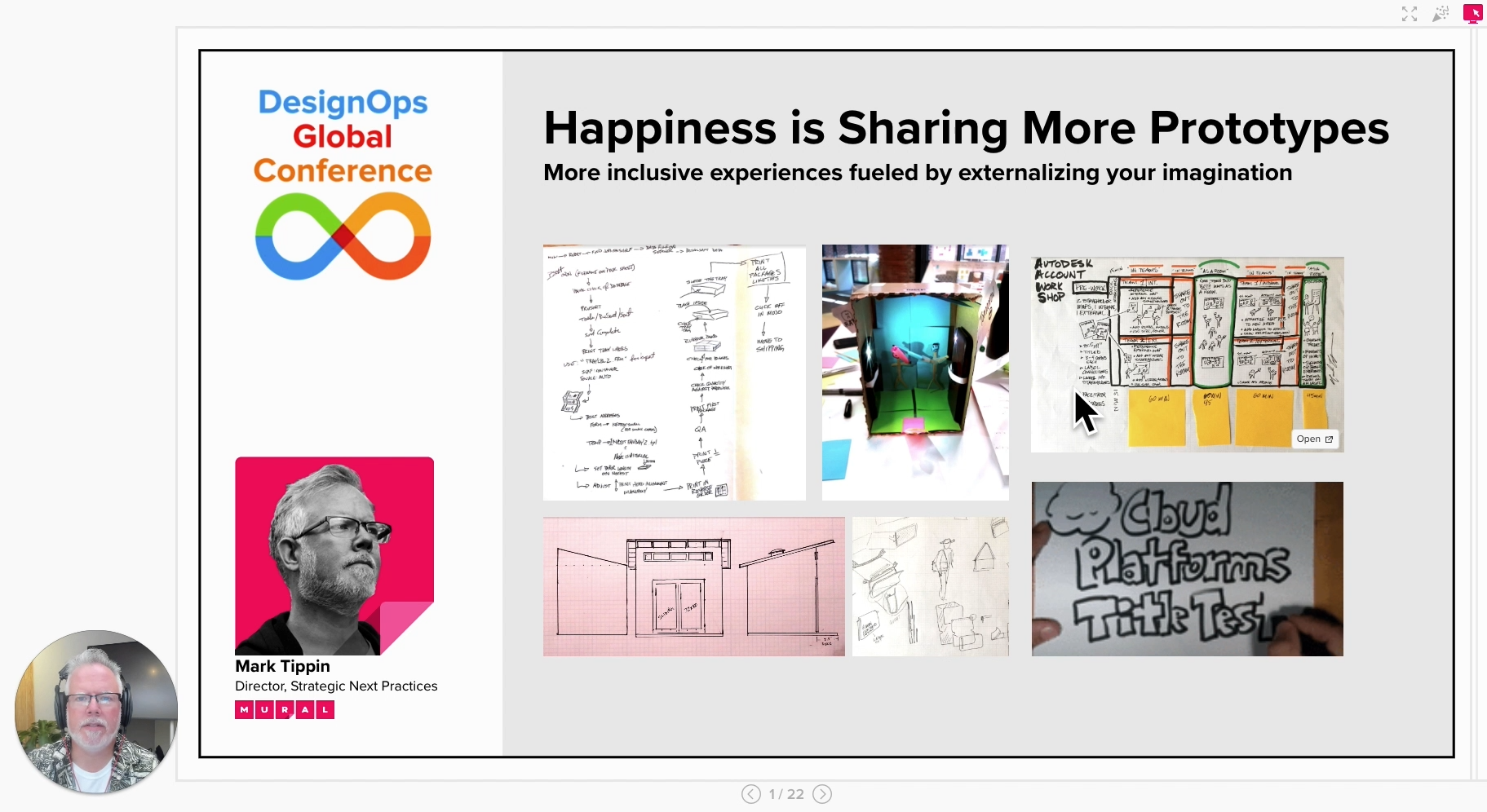DesignOps Global Recap: Why Imperfect Prototypes Spark Innovation | MURAL Blog

MURAL at DesignOps Global 2021
Now in its third year, DesignOps Global is for UX researchers, experience designers, interface designers, product owners, service innovators, software developers, and business leaders who are defining the way we research, design, and deliver new products and services using operations at scale. One of the main focus areas for this year’s conference was ResearchOps, an emergent set of operations helping organizations establish data-informed strategies using customer and colleague insights to drive decision making.
The programming for this topic answered key questions, like how do we close the loop between strategy, research, design, and development to ensure we design for everyone?
Mark Tippin, Director, Strategic Next Practices at MURAL, has over 20 years of experience in human-centered design. Drawing from personal experiences in his career, he led a session called Happiness is Sharing More Prototypes. Here is a summary of his presentation for the DesignOps Global event.
Happiness is Sharing More Prototypes

The most common assumption about what is required for a prototype is believing that the fidelity needs to be practically perfect for others to understand it and provide feedback. However, perfection is the enemy of progress. It’s counterproductive to spend an inordinate amount of time trying to perfect a prototype and subsequently, lose precious time that could’ve been spent iterating. Prototyping just needs to be good enough to elicit feedback — it can be tiny and mighty.
Rely on your stakeholders’ feedback to get closer to a minimum viable product (MVP), rather than trying to get it right from your initial prototype at the get-go. Everything is just a prototype of the next best iteration that you’re going to have. Quick is more valuable than beautiful at this stage. More valuable than the aesthetics of your prototype or presentation is the problem solving and strategic thinking behind it.
Externalizing your ideas is a practice that may require some getting used to. Letting ideas linger in your mind and mulling them over can often lead to procrastination and delaying progress. Capturing your ideas in writing or a sketch allows you and others to react to them, giving them a chance to grow and evolve.
To ensure you’re receiving feedback from a diverse array of viewpoints, consider the barriers to inclusion that may exist in your processes. For example, have timezone friendly meetings; allow for asynchronous review cycles; provide a preview or questions in advance of meeting for people to think through before they’re “live” on a call; record your feedback sessions to ensure everyone has a chance to be a part of the process; and consider if you need to get it translated for team members who speak a different language; allow for anonymous voting.
Watch Mark’s session:
Looking to improve how you prototype?
Discover how you can add a new dimension of engagement, productivity, and fun to your feedback sessions and brainstorm with MURAL.
